This is a translation of an article in Russian, by S.N. Filipenkov, research associate of NPP Zvezda JSC. You will find the original here:
https://dzen.ru/a/YJE_L_4QbVkihGT4
How and why was the Soviet lunar spacesuit tested with overload on a centrifuge?
Unlike the American Apollo programme, where astronauts used a universal soft spacesuit which served both for rescue in case of spacecraft depressurisation during the flight and for landing on the Moon, Soviet scientists opted for two separate spacesuits: a rescue suit; and a 2nd spacesuit for spacewalking.
The suit for the Moon landing was named "Krechet-94". Unlike universal soft-type suits, the "Krechet" was based on a cuirass made of aluminium alloys, which, together with the helmet, is a single unit. On the back of the cuirass there is an entrance hatch, in the door of which a life support system (LSS) was installed.
It was on the basis of the SC "Krechet" that the Orlan space suit was subsequently developed.
The problem was that the cosmonaut had to perform lunar landing and take-off, under higher than normal G loads. Not as much as launching from Earth, but still perceptible overloads while wearing the spacesuit.
Instead of a tight-fitting backrest, the cosmonaut rested on the hatch with the coolant located in it, and every irregularity or protrusion of the aluminium cuirass at the place of back contact could cause strong local pressure and painful sensations, or possibly even injuries.
In order to investigate the possibility of finding and preserving the working capacity of a cosmonaut in "Krechet" suit under overloads, scientific research was conducted at JSC "NPP "Zvezda" and, in particular, experiments with the rotation of testers in "Krechet" suit on a centrifuge with overloads of different magnitudes.
Experiments on the lunar programme were carried out from 1965 to 1970 in a closed cabin of the centrifuge simulating the cabin of the lunar take-off and landing vehicle of the rocket-space complex "H1-L3".
One of the lunar cockpit simulators was equipped with a flat pad to accommodate a test person in a spacesuit in a standing posture with the spacesuit locked in a special shock-absorbing system so that the acceleration acted in a "pelvis-head" direction.
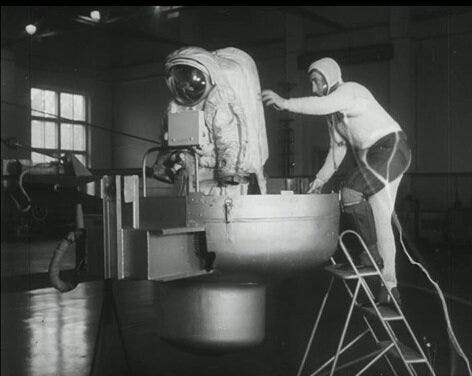
Interesting addition:
You will laugh, but while processing photos, the attention of the author of the blog "Walking in the Stratosphere" was attracted by a metal ladder and to confirm his suspicion, (he was not lazy to go to the centrifuge hall, the door of the office is directly opposite the entrance to the hall). You won't believe it: the ladder is still in service and operational!
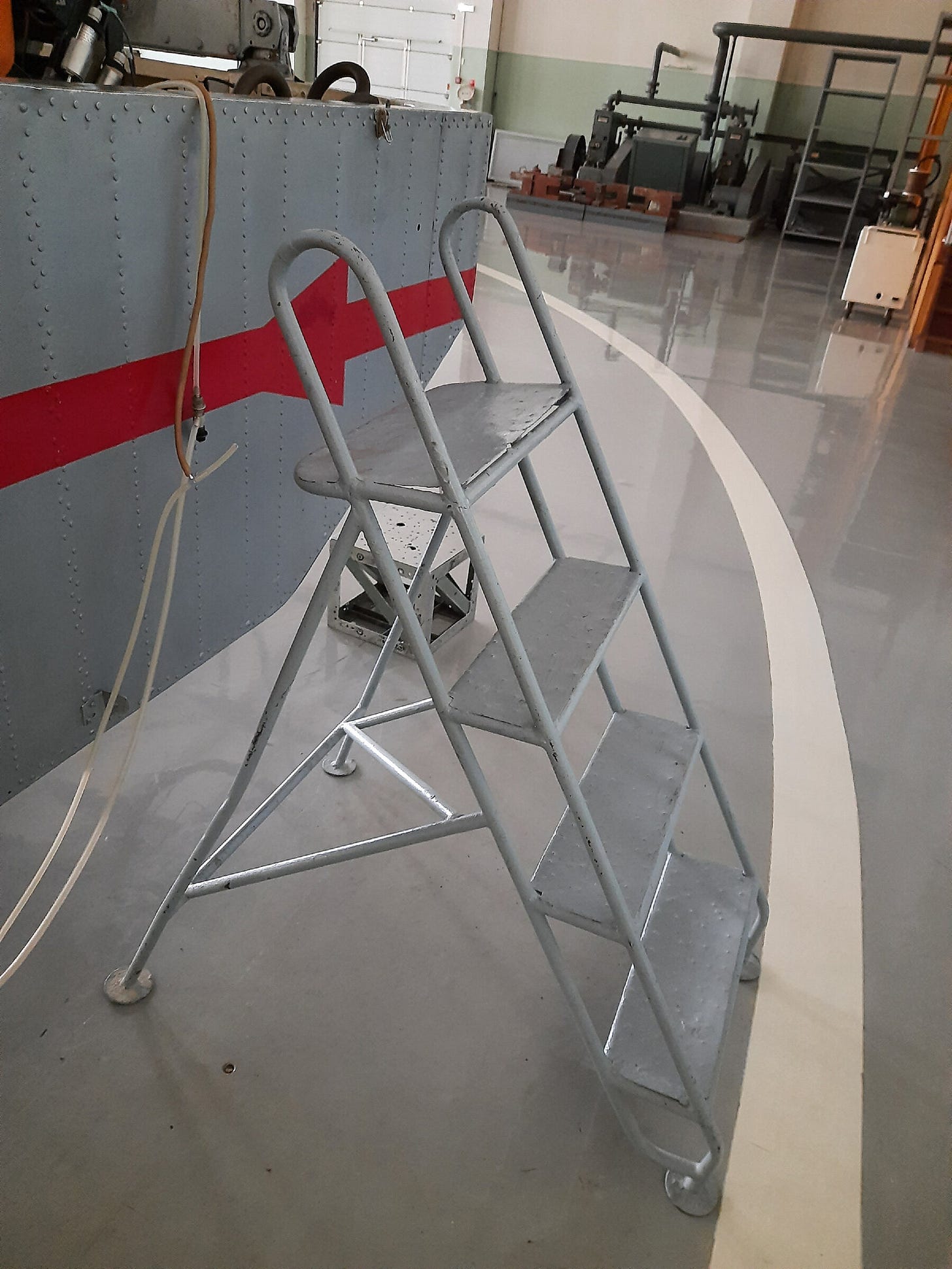
To secure the tester in the cockpit, a power belt spar was used, on which a bracket was mounted with an axle at the front and a catcher at the sides. Response assemblies secured the tester in the cockpit. A rail was used as a handrail, which the tester held on to during the experiment. A special "touch button" was installed on the rail, which, when released, signalled the termination of the test. (Note from Nick, this sounds like what we in the west would call a “Dead Man’s Handle”, that operates the brakes if released).
In addition to research on the lunar programme, the centrifuge at Zvezda also was used for experiments as part of the R-2 space rocket plane programme.
S.N. Filipenkov, research associate of NPP Zvezda JSC.
See also:
Here’s an excellent guest article on the Krechet suit, written by Karl Dodenhoff.
graphicsnickstevens.substack.com/p/the-krechet-lunar-suit
This Edition’s Cool Image:
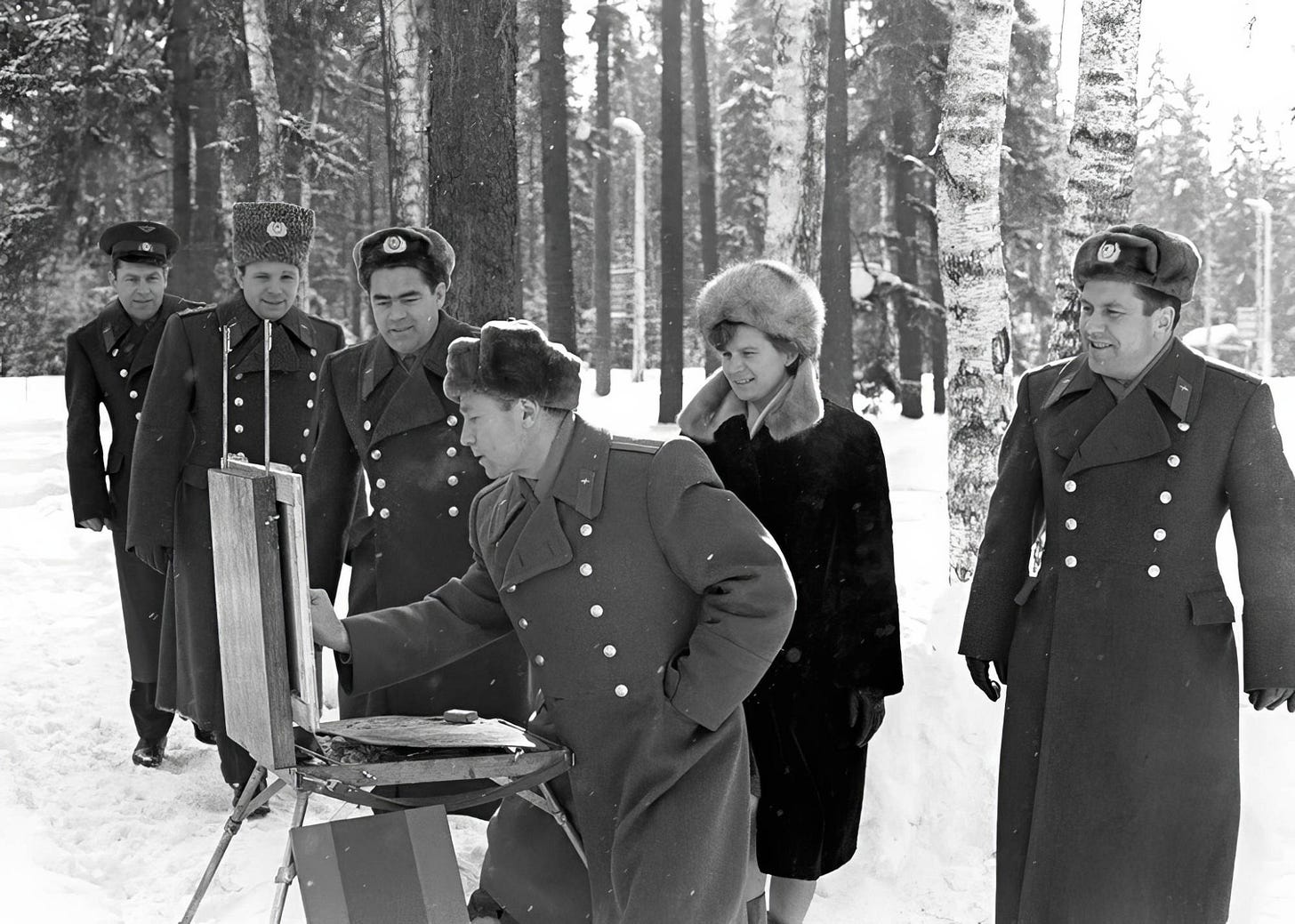
This editions cool links:
Russian language article on the development of the Zvezda centrifuge:
https://dzen.ru/a/YGIpDyszk2wWTnuI
Short video of the Zvezda centrifuge in operation:
https://dzen.ru/video/watch/6042846058285736dd532fb7
This editions 1 week only download:
Novosti Kosmonavtiki Magazine. All 12 issues from 2008. PDF format.
Only available for download for 7 days after the publication of this article. No exceptions.


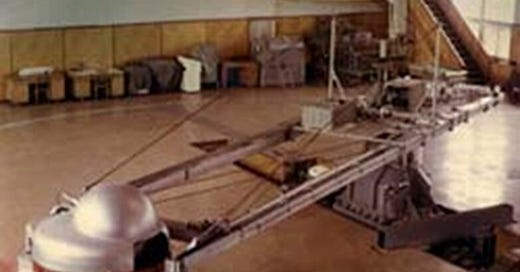


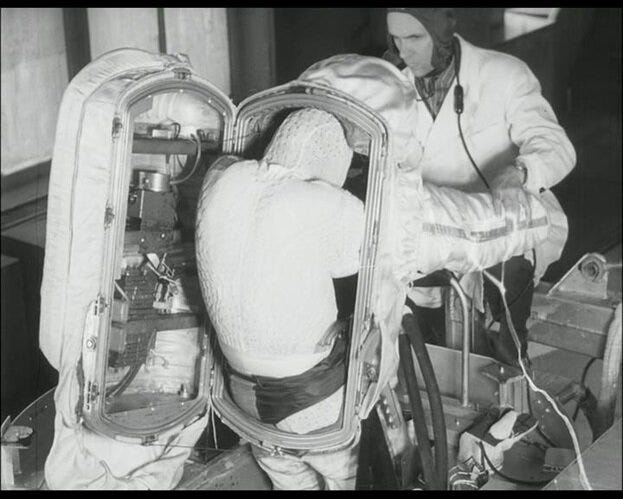
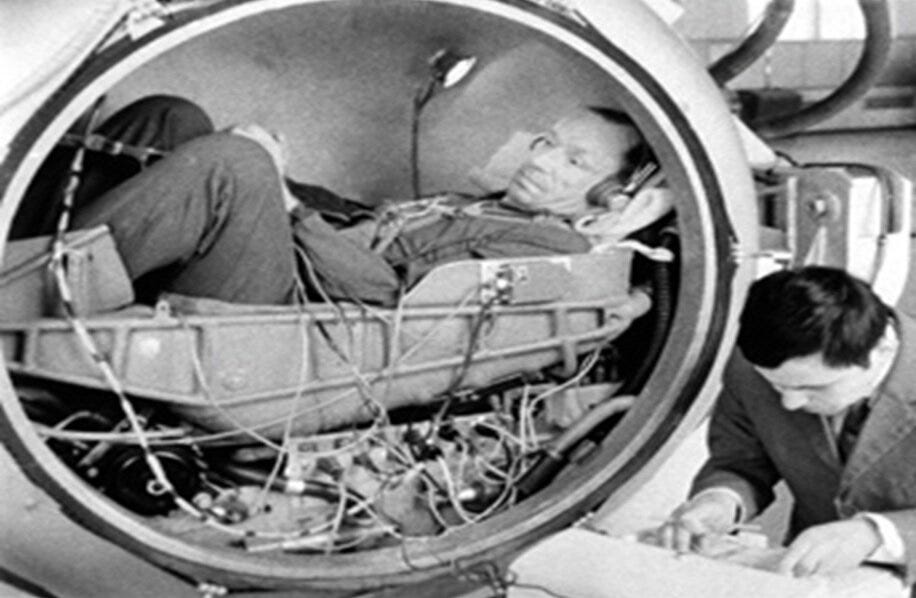

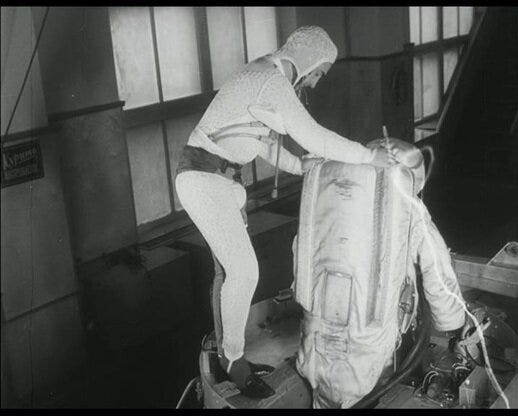
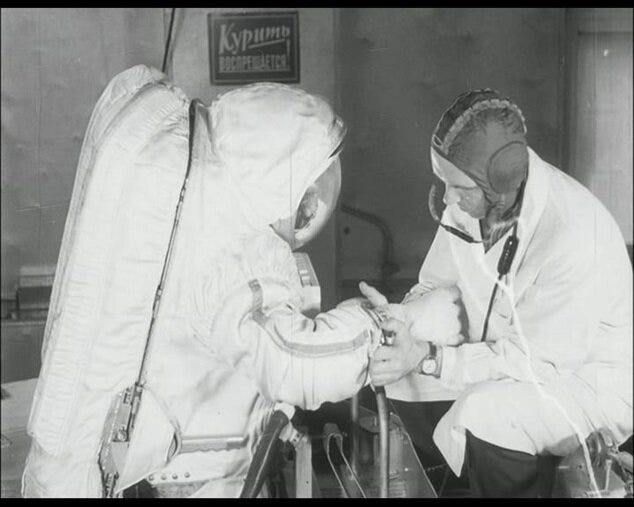
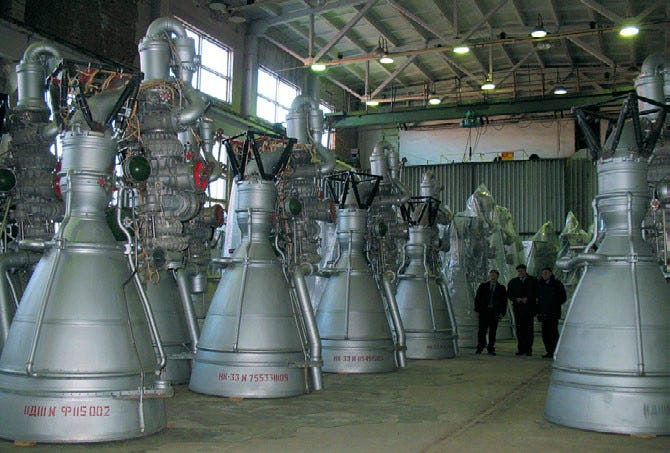
I may have missed it in my reading, but I’m wondering if they ever decided to add some padding between the life support equipment in the hatch and the cosmonaut.
Great write-up, Nick! I always love the grainy old Soviet vidcaps. Thanks also for the free mags! I already scanned one quickly and I was able to at least figure out what they were writing about most of the time.